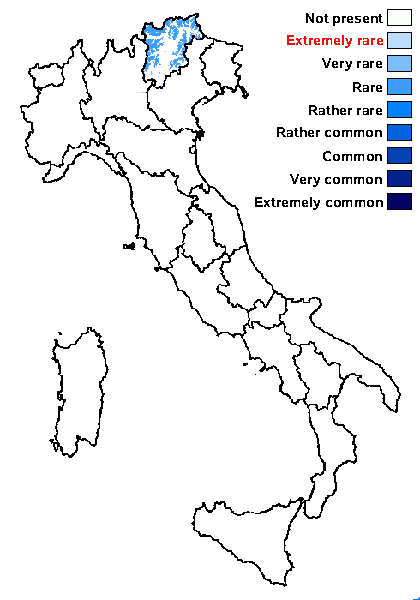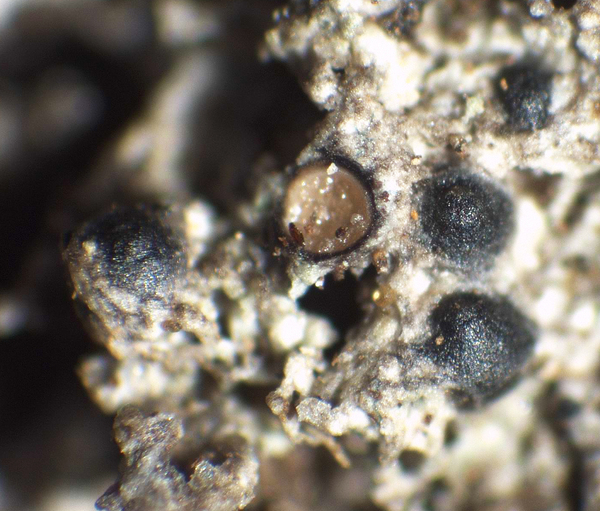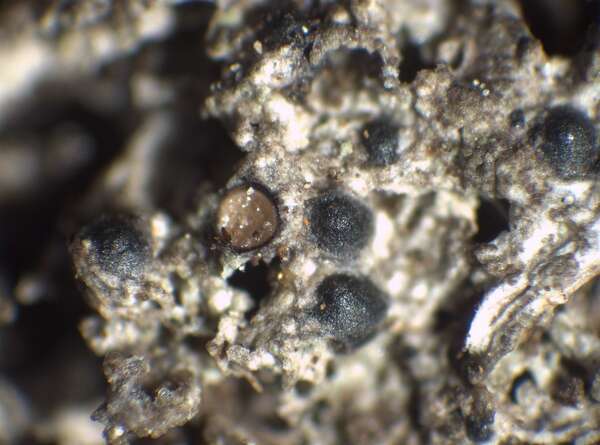Polyblastia evanescens Arnold
Verh. zool.-bot. Ges. Wien, 21: 1123, tab. 14, fig. 11, 1871.
Synonyms:
Distribution: N - TAA.
Description: Thallus crustose, grey, very thin and film-like, continuous, often poorly evident. Perithecia black, globose, projecting, up to 0.2 mm across. Exciple dark throughout; hamathecium of periphyses and periphysoids, interascal filaments absent; hymenial gel hemiamyloid, I+ red (I+ blue at very low concentrations of I), K/I+ blue. Asci 8-spored, clavate, K/I-, fissitunicate, the wall thickened above, with a broad ocular chamber, dehiscent by extrusion of an endotunica to form a delicate rostrum. Ascospores strongly muriform, with 10-12 transverse septa and 3-4 longitudinal septa, hyaline, sometimes very pale brown when old, ellipsoid-cylindrical, 45-60 x 18-25 μm. Photobiont chlorococcoid. Spot tests: K-, C-, KC-, P-, UV-. Chemistry: without lichen substances.Note: on bryophytes (Rhacomitrium, Distichum, Encalypta), with optimum above treeline; very rarely collected, but perhaps more widespread in the Alps.
Growth form: Crustose
Substrata: soil, terricolous mosses, and plant debris
Photobiont: green algae other than Trentepohlia
Reproductive strategy: mainly sexual
Commonnes-rarity: (info)
Alpine belt: rare
Subalpine belt: very rare
Oromediterranean belt: absent
Montane belt: absent
Submediterranean belt: absent
Padanian area: absent
Humid submediterranean belt: absent
Humid mediterranean belt: absent
Dry mediterranean belt: absent

Predictive model
Growth form: Crustose
Substrata: soil, terricolous mosses, and plant debris
Photobiont: green algae other than Trentepohlia
Reproductive strategy: mainly sexual
Commonnes-rarity: (info)
Alpine belt: rare
Subalpine belt: very rare
Oromediterranean belt: absent
Montane belt: absent
Submediterranean belt: absent
Padanian area: absent
Humid submediterranean belt: absent
Humid mediterranean belt: absent
Dry mediterranean belt: absent

Predictive model
 Index Fungorum
Index Fungorum
 GBIF
GBIF




